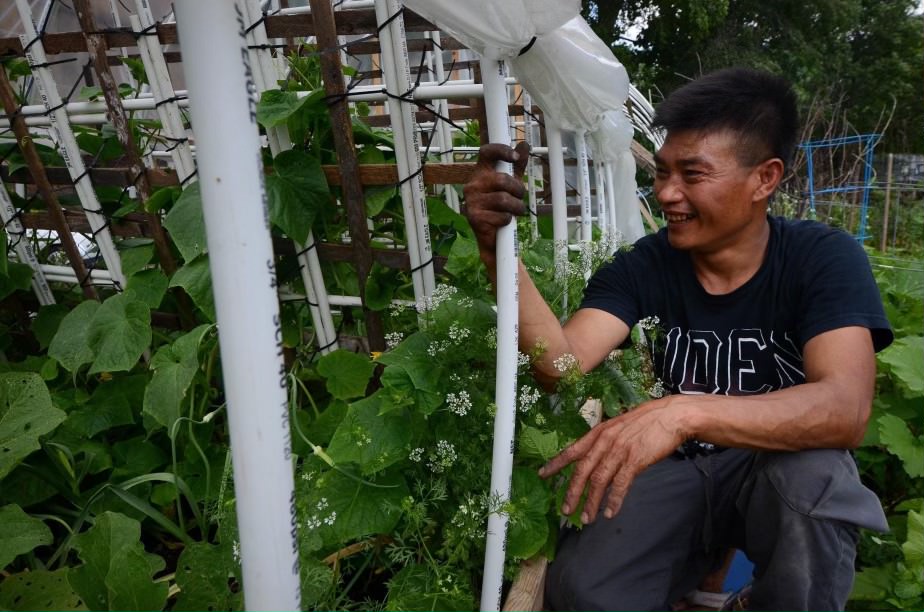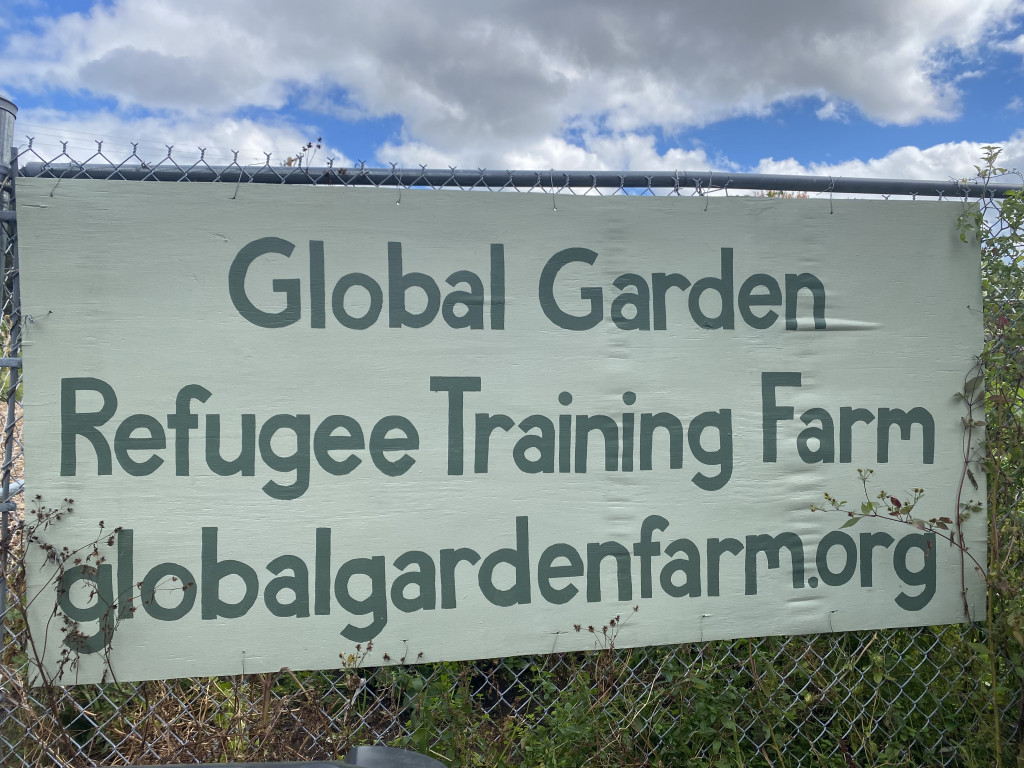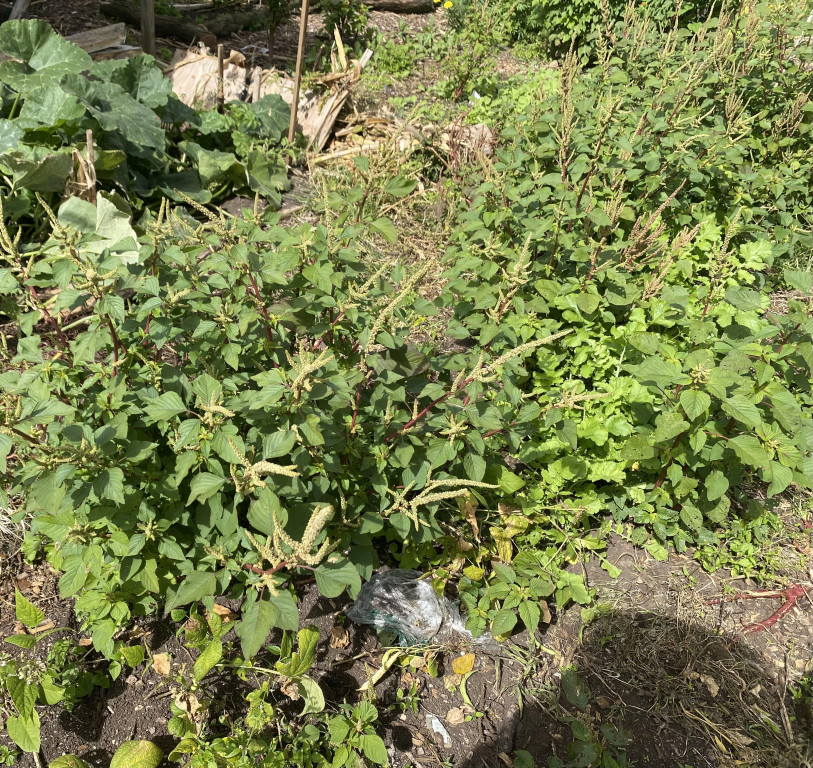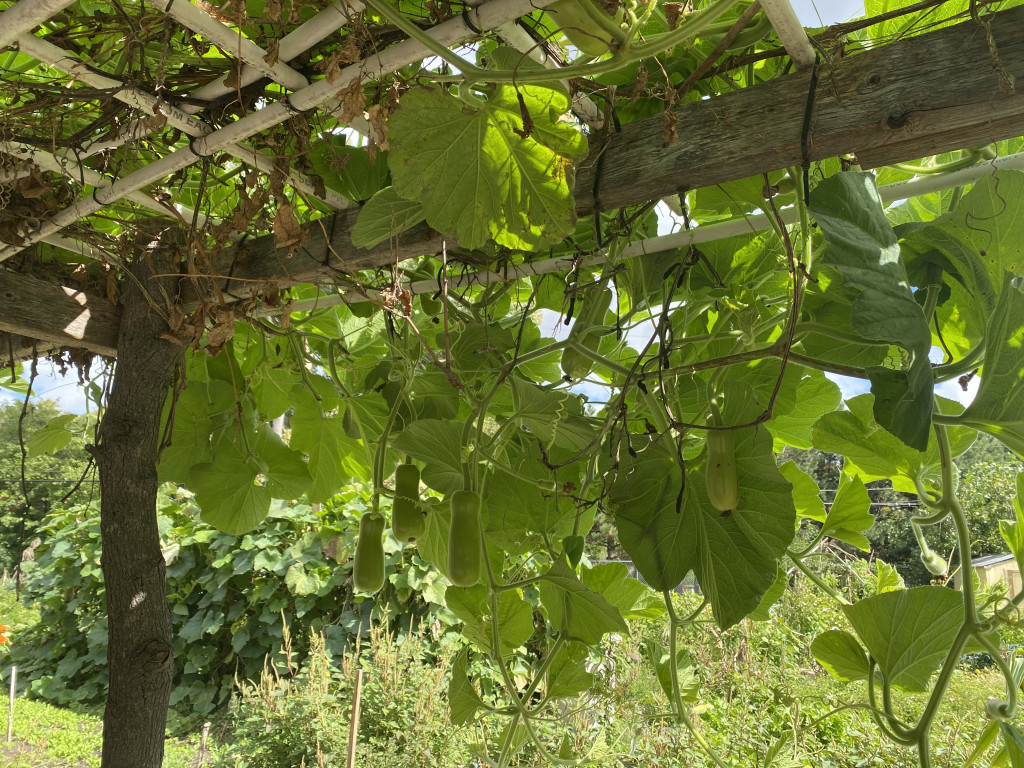
Than Naing Oo next to his garden plot in 2018 in Chicago. (Photo courtesy of Paul Bick)

Than Naing Oo next to his garden plot in 2018 in Chicago. (Photo courtesy of Paul Bick)
Green space in Chicago is quite the contrast from the hustle, bustle, and asphalt that typically characterizes the city. Global Garden Refugee Training Farm, a community-sustained farm, happens to be one of those special green spaces in Chicago.
The farm itself, just off of storefront-lined Lawrence Avenue, interrupts the cityscape, appearing like a lush jungle apparition.
Although the farm has “training” in its official name, Linda Seyler, the director of the farm, says that there’s not much that she or farm manager Haley LeRand have to teach them.
“They were farmers in their home country. They’re the best farmers I’ve ever met,” Seyler says.

Their training does, however, focus on preparing farmers for Chicago’s climate, as well as introducing new crops that the farmers might not be familiar with, such as Swiss chard.
Than Naing Oo, one of Global Garden’s market farmers, says “kale, chard, spring onion, they love the cold.”
LeRand says that farmers might not be immediately excited about growing more typical American produce, but that it eventually grows on them. In fact, she says some market farmers might not have even tried eating some of the American vegetables that they grow.
Naing Oo, on the other hand, is curious, and although he didn’t initially like arugula, he’ll eat it after pickling it in a brine of water, dried rice, and salt.
Naing Oo has been selling his yields as a market farmer for two years now, but has been farming with Global Garden since its inception in 2012.
Before coming to the U.S., Naing Oo spent 20 years in a refugee camp in Thailand. He is Karen (pronounced kah-REN), an ethnic identity that is a point of contention in Myanmar due to Karen people’s ongoing persecution in the country. Most farmers at Global Garden – about 75% in fact – are refugees from Myanmar (previously Burma). Many of them dislike being referred to as Burmese, a term that challenges their people’s sovereignty.
Farmers like Naing Oo have brought traditional fruits and vegetables to Chicago to grow in their garden, while also integrating local cultivars. Known as his “signature” are Chinese long beans, which he likes to prepare in a salad with fish sauce, lime, and other veggies.
In late September, he had picked his plants bare, taking what he could before the end of market season.
Amaranth is another popular crop with the farmers, including Naing Oo. It is indigenous to the Americas, but is mostly seen as a weed.

“If you had a corn or soybean farmer come and visit they would look at us like we’re crazy for cultivating it,” LeRand says. But she explains that amaranth is more nutritious than spinach, and farmers often use it for stir frying.
Another common fruit on the farm is bitter melon, which LeRand says is most commonly used for medicinal purposes. Farmers might eat it with eggs, or if they’re really brave, on its own, because, as Seyler says, “it is really bitter.”
Naing Oo makes a soup with water, garlic, bitter melon leaf, and squash flowers steeped in hot water, which he says is good for digestion. He says he isn’t much of a cook though, and likes to bring the ingredients home for his wife to make.
Also on the farm, Naing Oo likes to grow Thai chilis, a popular farm snack that farmers tend to eat on its own raw or wrapped in bitter melon leaf to eat with their stir-fried vegetables and rice – common in lunch boxes.

LeRand says that there’s lots of sharing of cuttings and seeds on the farm, creating a sense of community. Naing Oo was able to get hingala seeds, a plant that’s native to Myanmar, from another farmer at Global Garden.
“And pretty soon, you have people from all different cultures growing a particular plant, which is really cool to see,” LeRand says.
But things don’t always work smoothly on the farm. Seyler says that they expect a lot of turnover at the garden, as she says there’s “a natural loss of participants.”
“They end up moving out of Chicago, because it’s expensive to be here and hard to figure out how to buy a house here, and they don’t need our little garden plot anymore,” Seyler says.
She also cited the previous presidential administration for the reduced participation after former President Trump put caps on the amount of refugees who could enter the United States. Even this year, the Biden administration has missed the mark on refugee admissions, with only 20% of the allocated spots being filled.
While the farm wants to prioritize newly arrived refugees, most farmers have been with them for years, with the newest family joining three years earlier. Seyler and LeRand are happy with the community space the farm has also been able to provide.
LeRand says that she and Seyler have hopes of finding another plot of land in Chicago to expand farming opportunities. Global Garden Refugee Training Farm is not the first refugee agricultural project in the U.S., but it is important that spaces like this one continue to be created for farmers like Naing Oo so they can stay connected to their traditions.